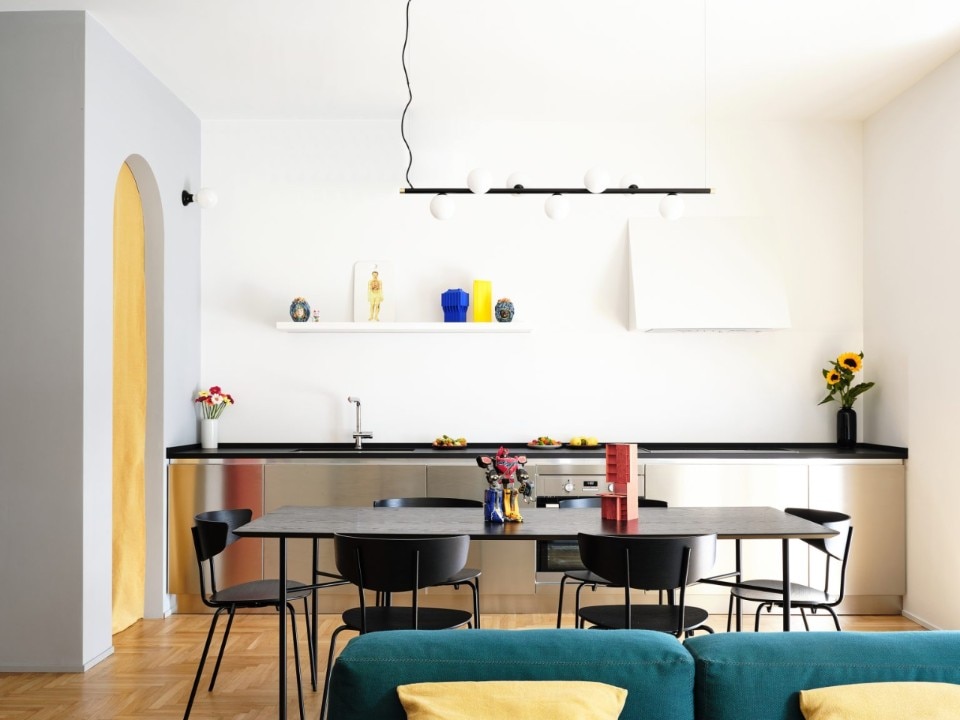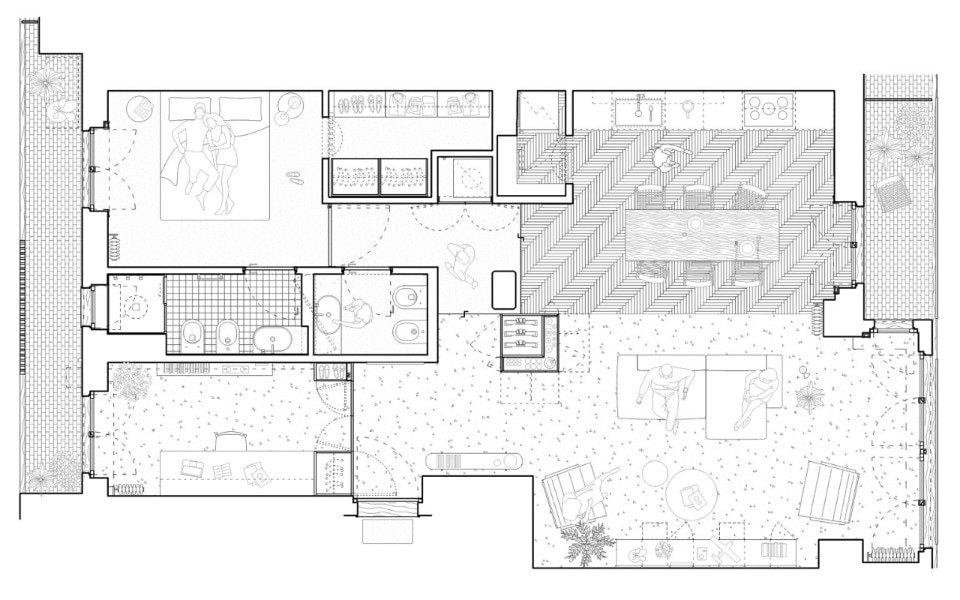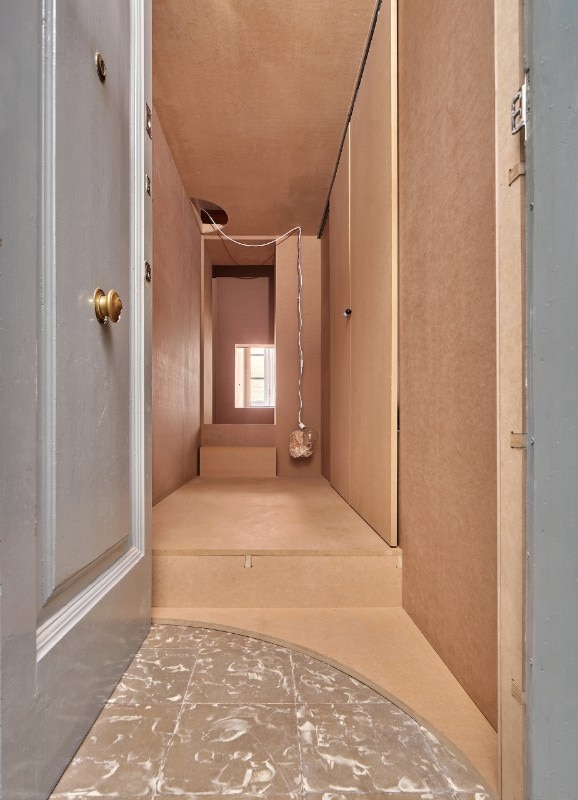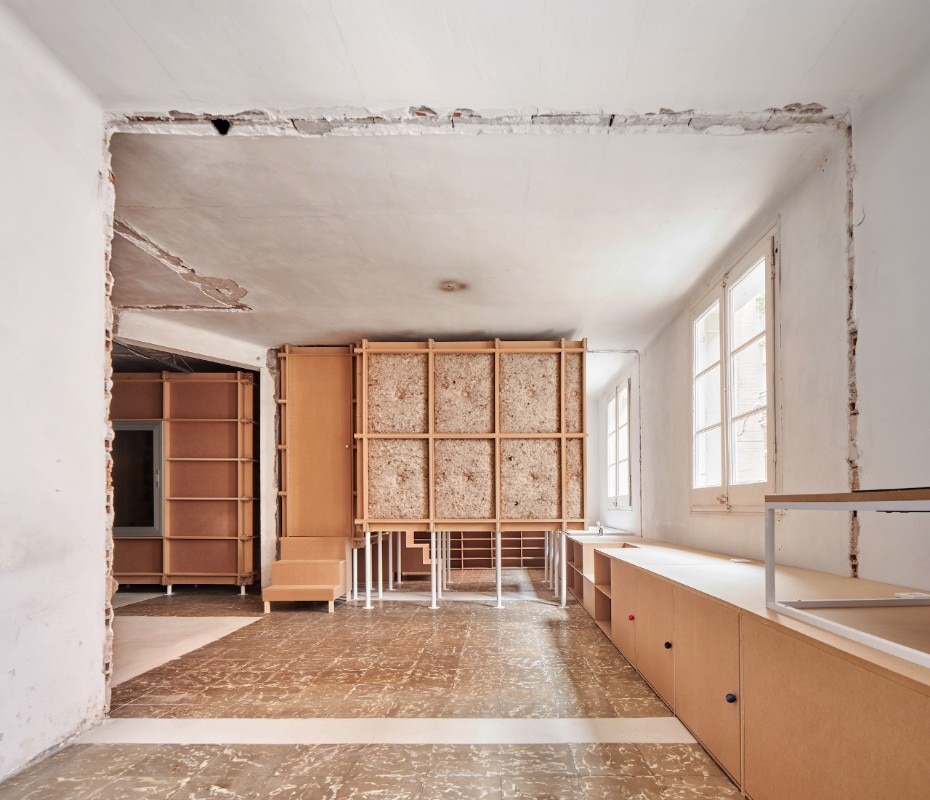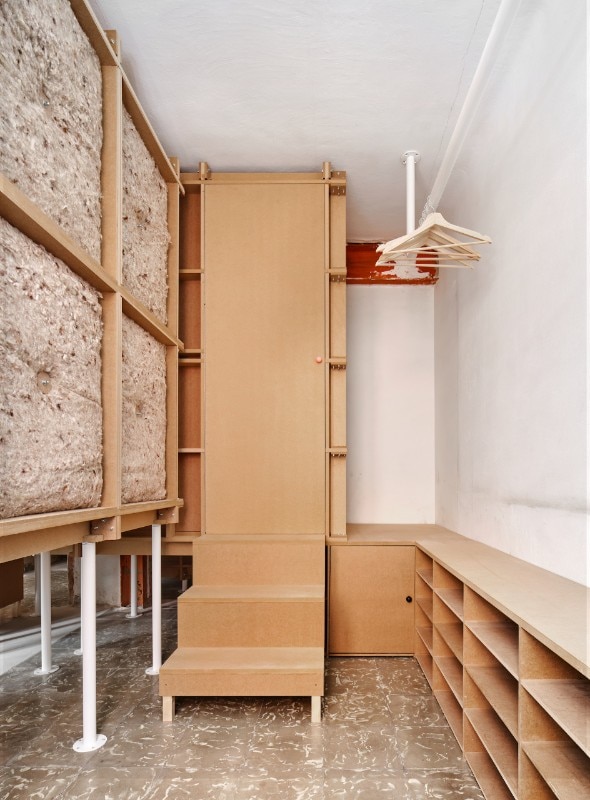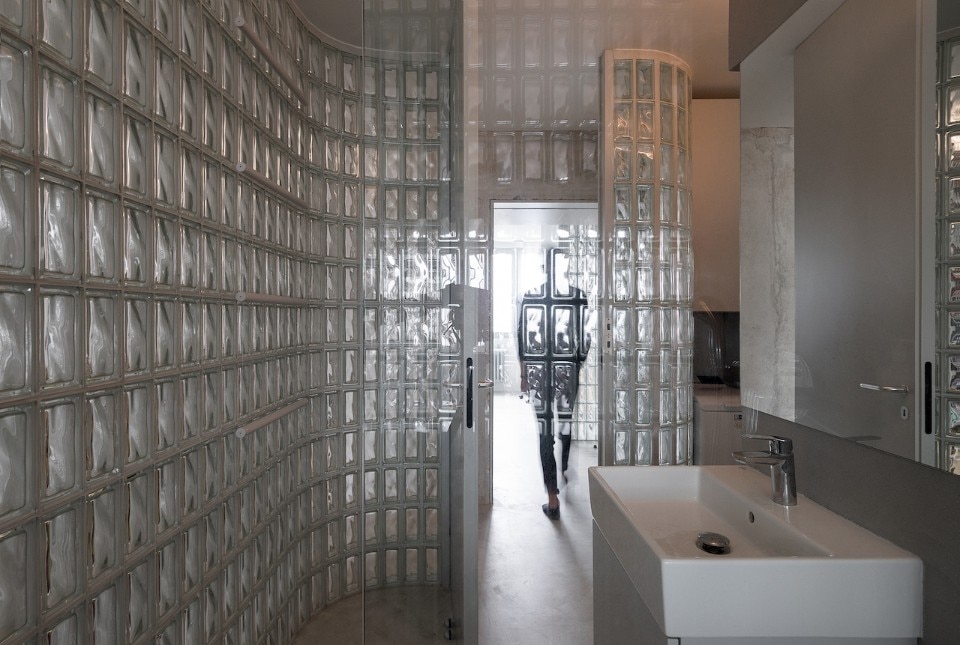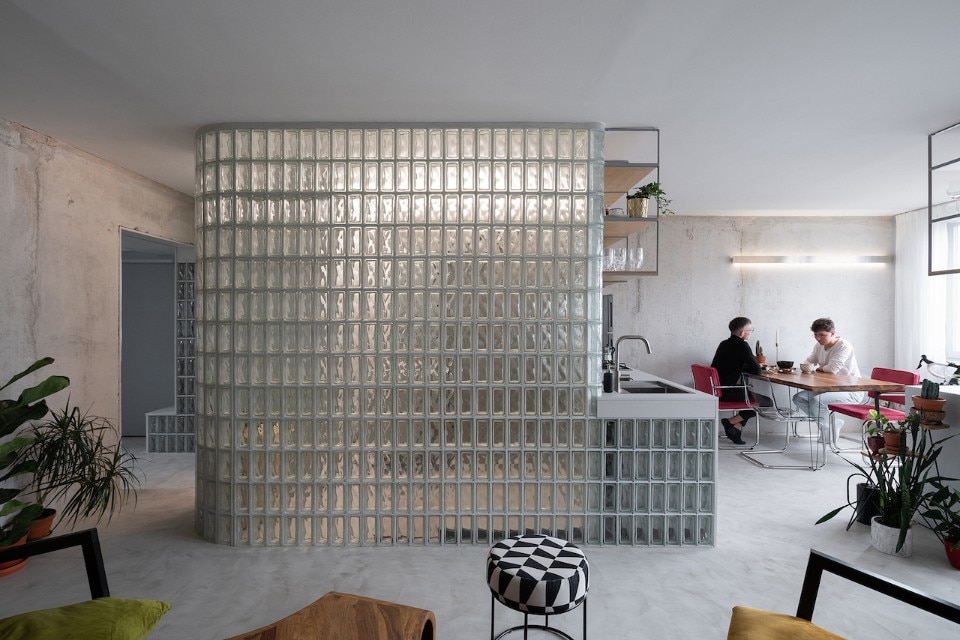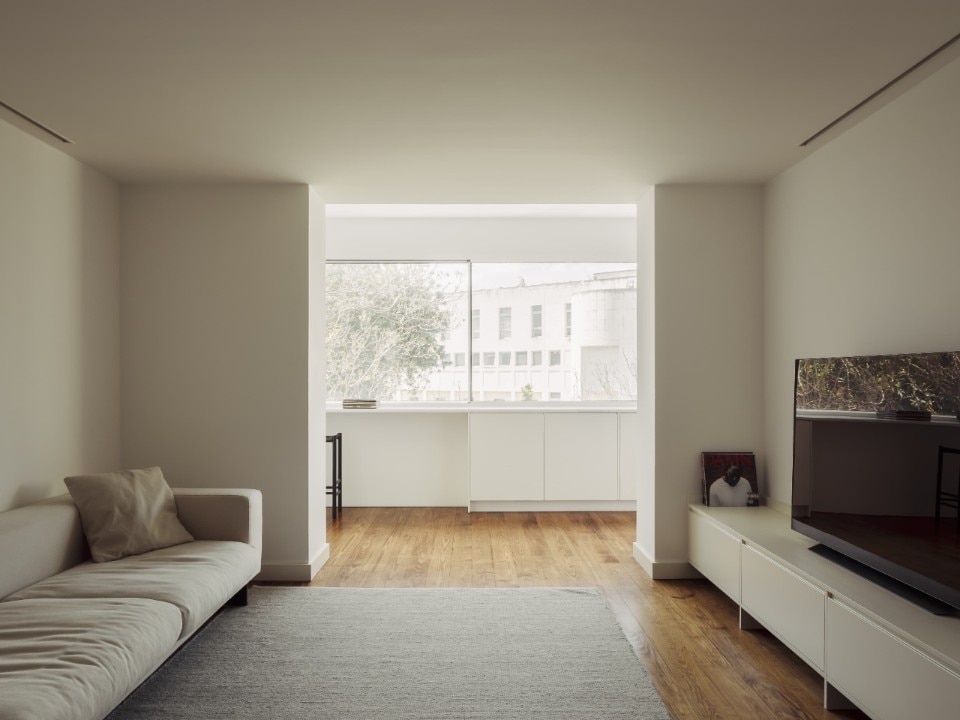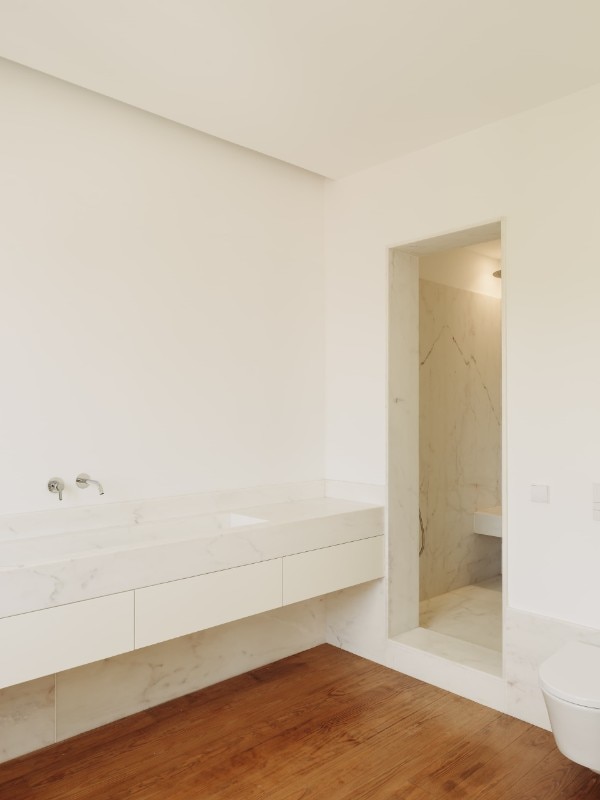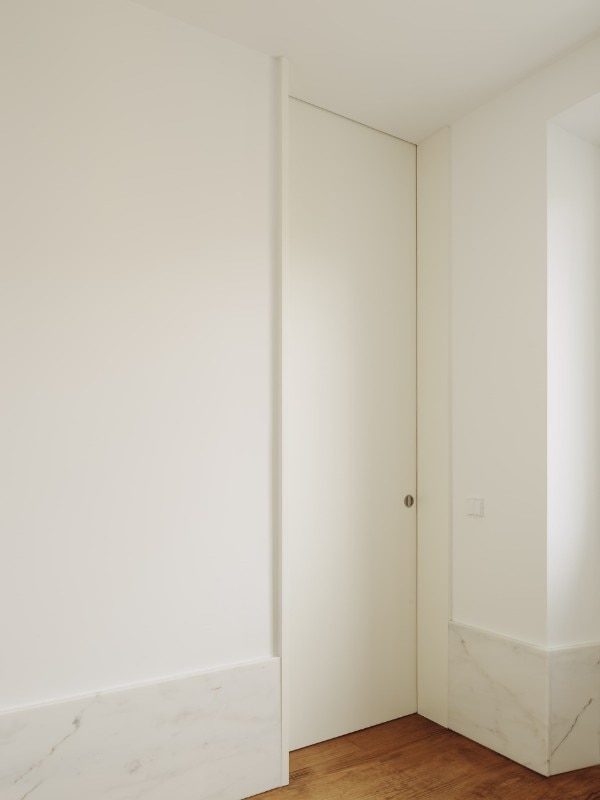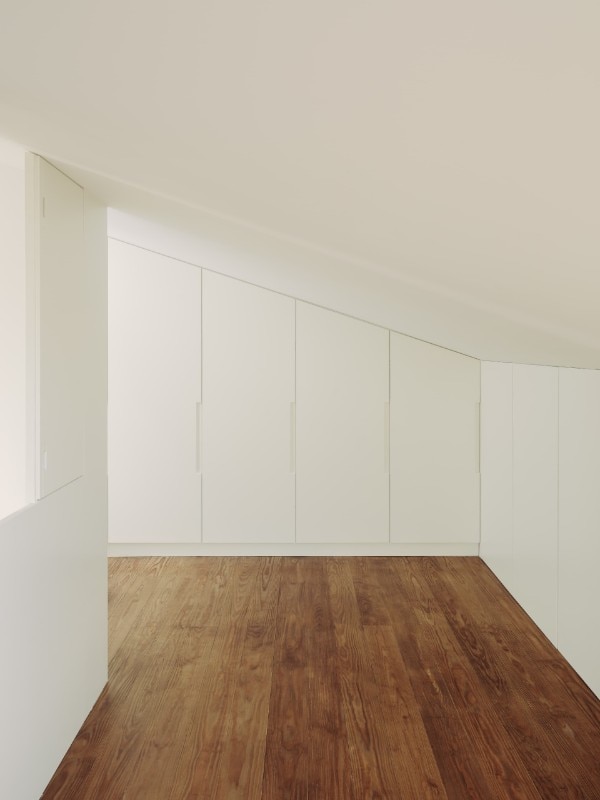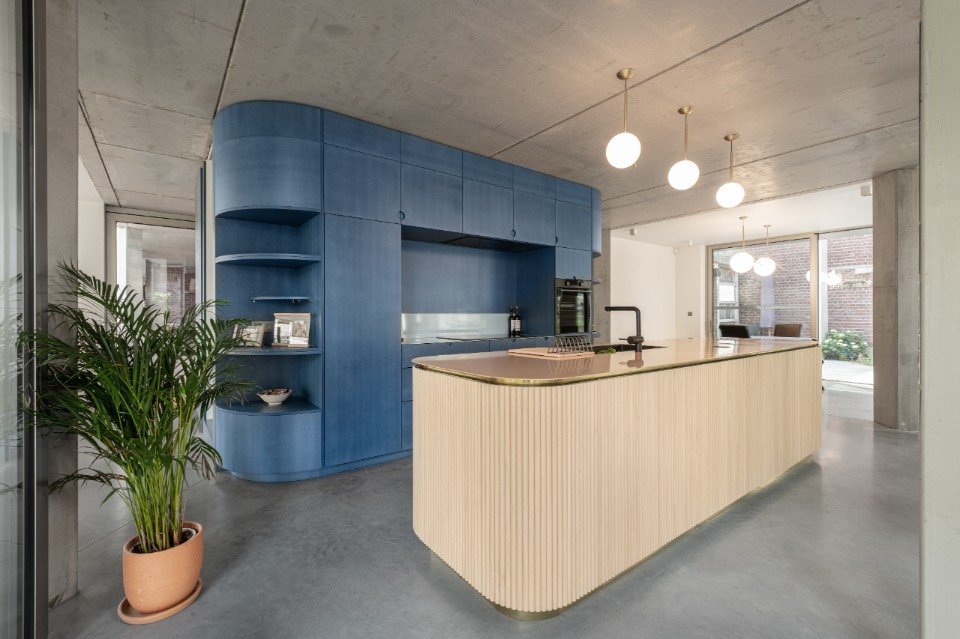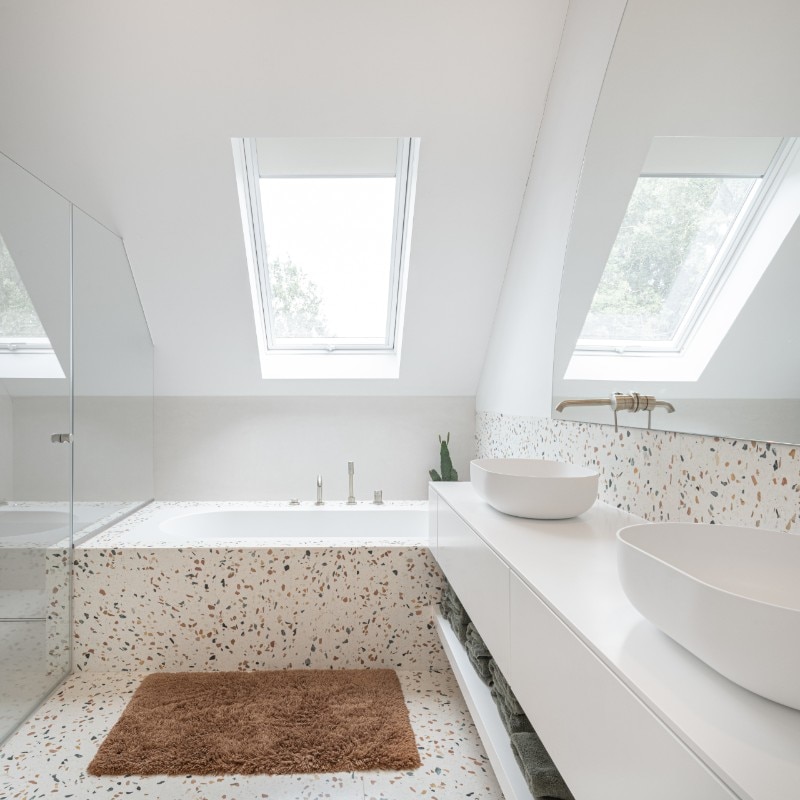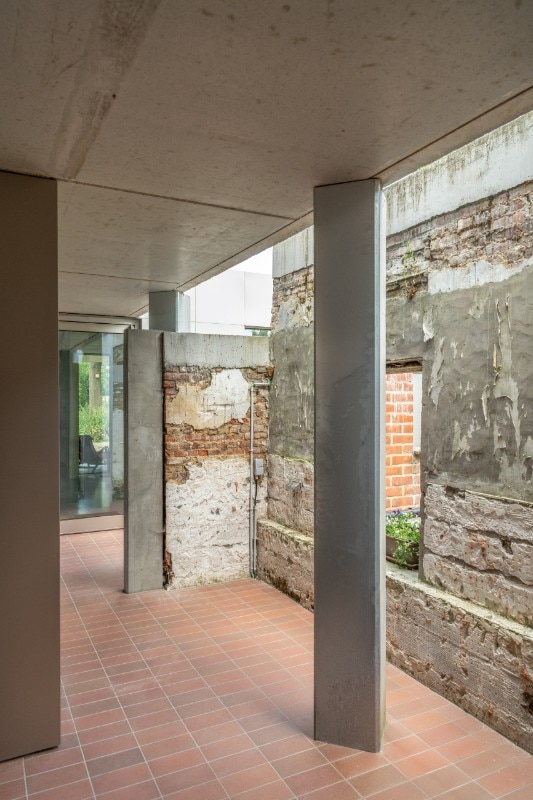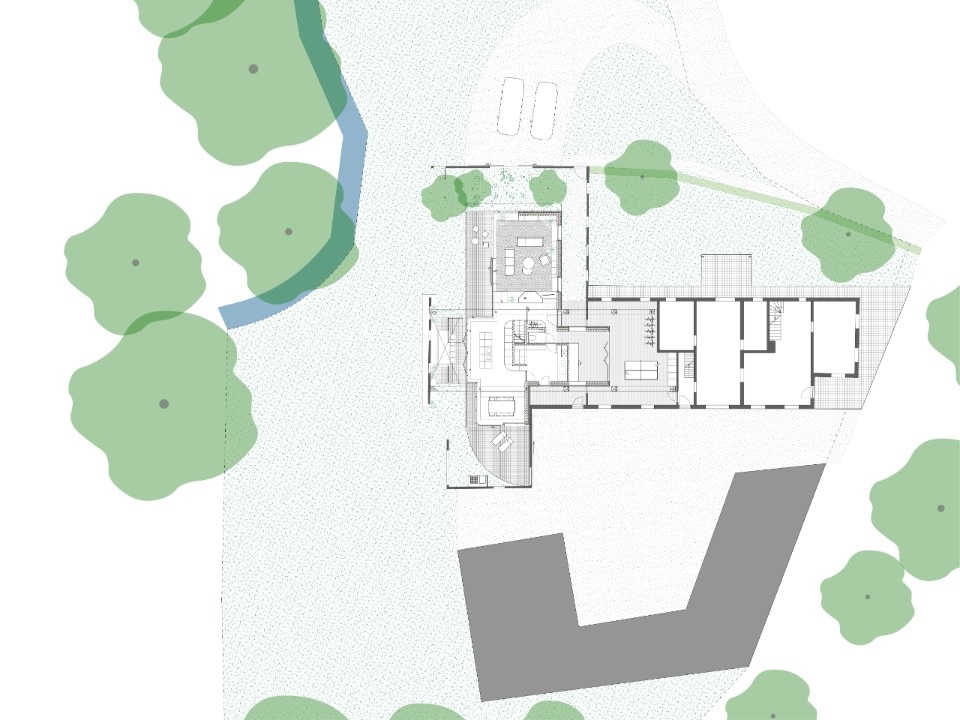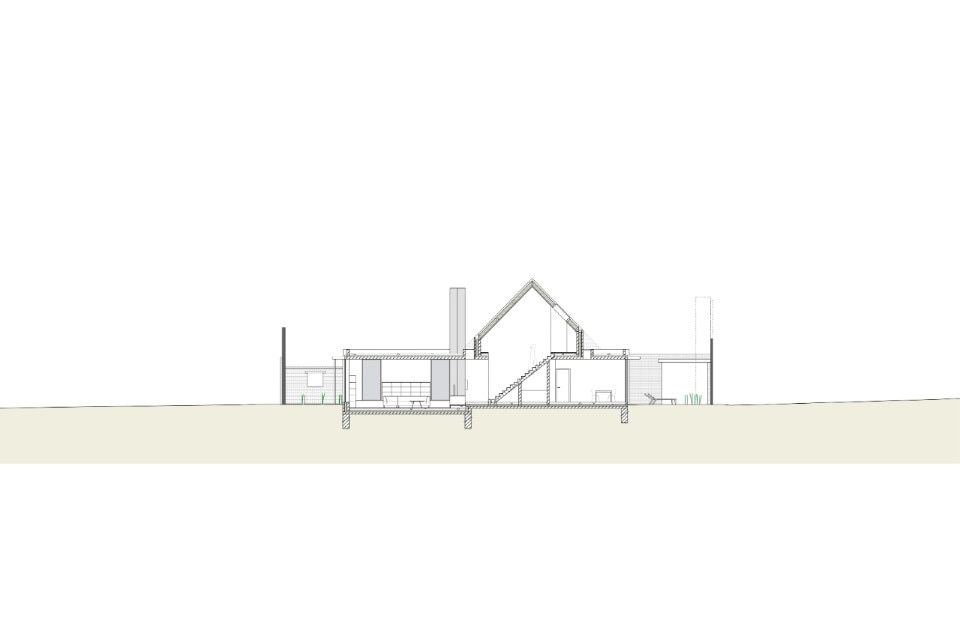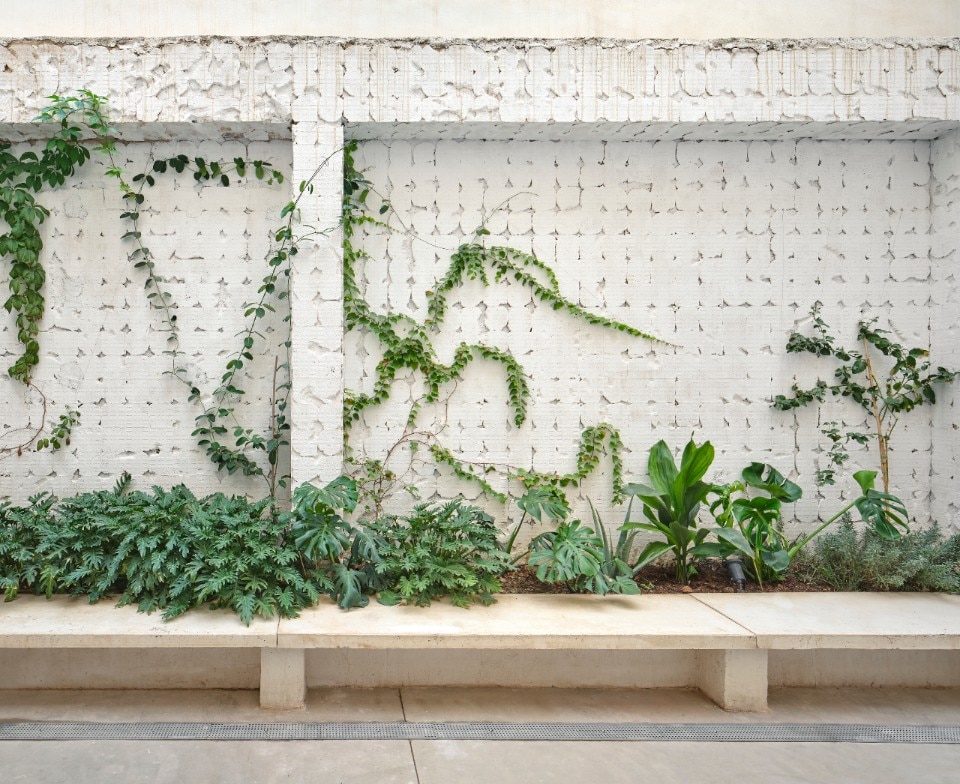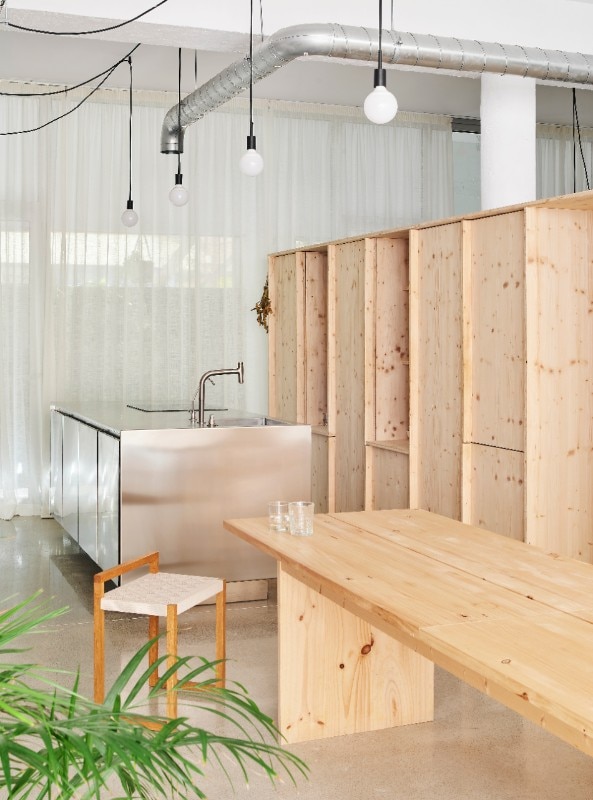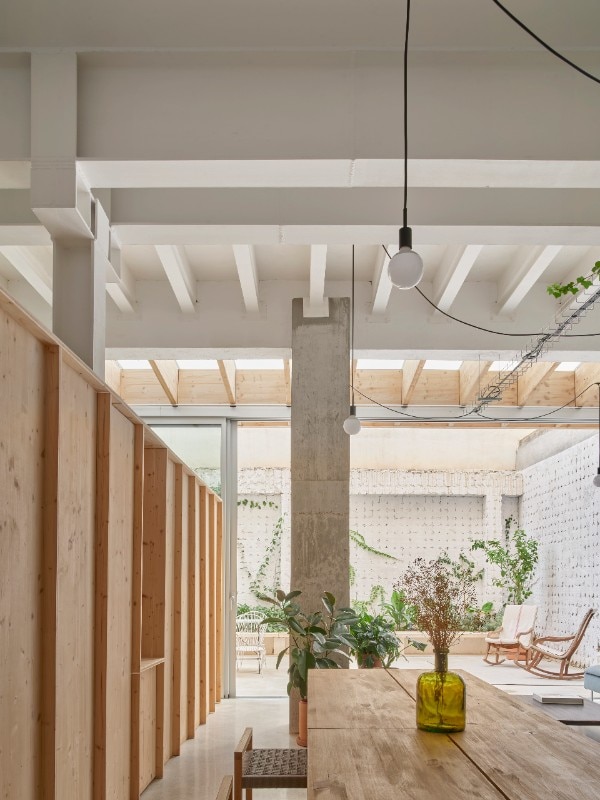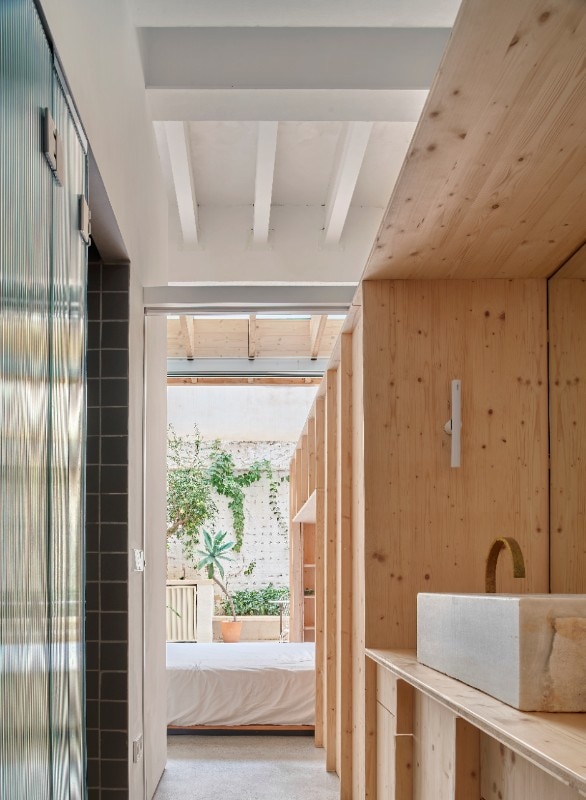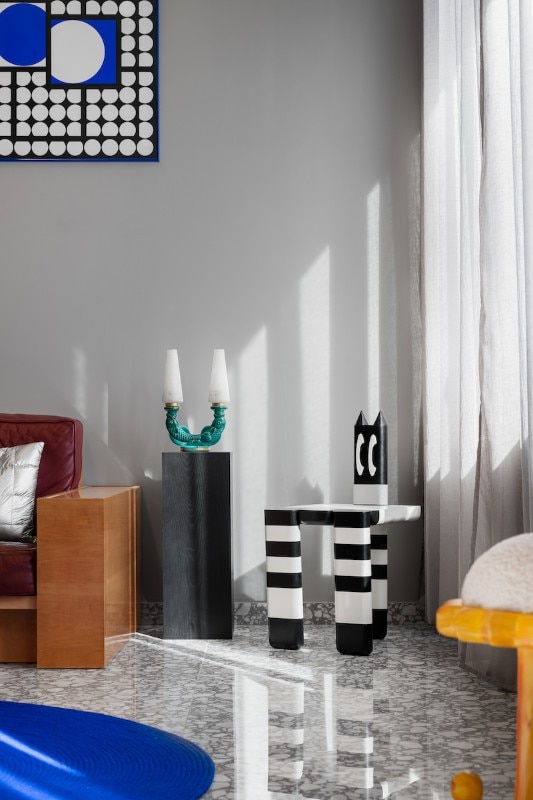If the unmanageable enfilades of sixteenth- and seventeenth-century rooms without corridors, then the modernist fragmentation of the countless small Existenzminimums, and then the equally unmanageable prairies of more recent open-space layouts have challenged the balances of our increasingly less standardised domestic lives, we should not overlook those cases, those undercurrents, that seek an alternative to such standards and trends: choosing the sculptural gesture is always one of the most interesting.
Perhaps it is not a question of choosing the radical gestures of Gordon Matta-Clark, unequalled in powerfully exploring the deepest nature of houses, but perhaps a little difficult to inhabit – as they entailed uncovering, carving or cutting houses in two.
Still, reorganizing interiors around a core, choosing to think in terms of outscaled objects that unify space, rather than walls – oh, the common persecution of plasterboards – that fragment it, is something that has been fascinating us for long. It already fascinated modern movement itself, with the solid cores around which the transparencies of Mies van der Rohe's Farnsworth House and other glass houses were articulated; and today it has definitely gained the front row, as we get closer to understand how much we need to reuse the built heritage we already have, instead of building new buildings.
Amidst large, precious inhabitable volumes, shapeshifting totems, sculptural gestures made by subtraction (turns out Matta-Clark was not such an inappropriate reference after all), outscaled furnishings, color blocks, opacities and translucencies, we browsed the interiors we published recently, to select a dozen of those sculptures, born inside houses so that people can finally inhabit them as they wish.
A ‘golden box’ in a Veneto interior
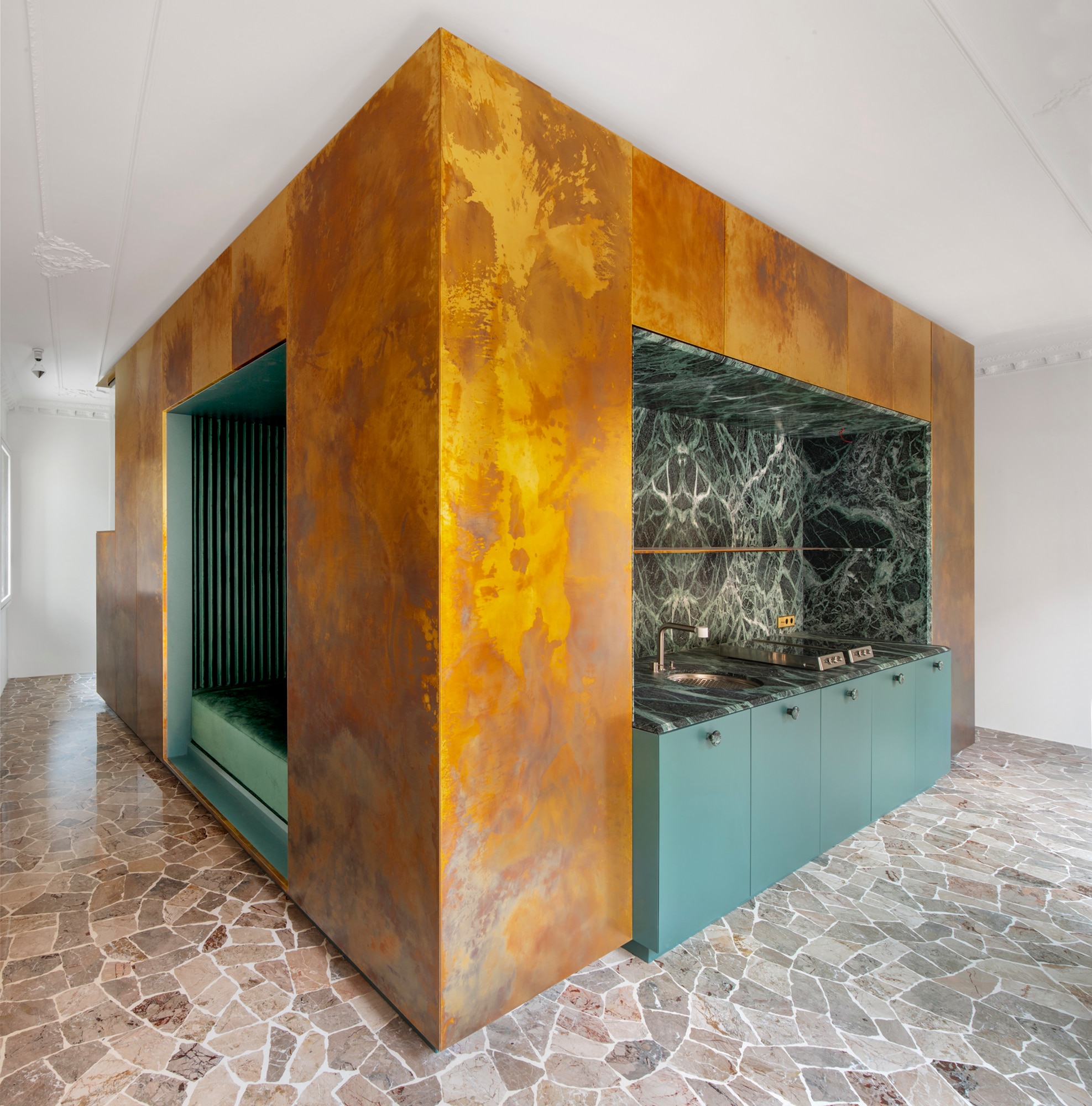
 View gallery
View gallery

AMAA Collaborative Architecture Office For Research And Development, Golden Box, Arzignano, Vicenza, Italy 2024
Photo Mikael Olsson

AMAA Collaborative Architecture Office For Research And Development, Golden Box, Arzignano, Vicenza, Italy 2024
Photo Mikael Olsson

AMAA Collaborative Architecture Office For Research And Development, Golden Box, Arzignano, Vicenza, Italy 2024
Photo Mikael Olsson

AMAA Collaborative Architecture Office For Research And Development, Golden Box, Arzignano, Vicenza, Italy 2024
Photo Simone Bossi

AMAA Collaborative Architecture Office For Research And Development, Golden Box, Arzignano, Vicenza, Italy 2024
Photo Simone Bossi

AMAA Collaborative Architecture Office For Research And Development, Golden Box, Arzignano, Vicenza, Italy 2024
Photo Mikael Olsson

AMAA Collaborative Architecture Office For Research And Development, Golden Box, Arzignano, Vicenza, Italy 2024
Photo Simone Bossi

AMAA Collaborative Architecture Office For Research And Development, Golden Box, Arzignano, Vicenza, Italy 2024
Photo Simone Bossi

AMAA Collaborative Architecture Office For Research And Development, Golden Box, Arzignano, Vicenza, Italy 2024
Photo Simone Bossi

AMAA Collaborative Architecture Office For Research And Development, Golden Box, Arzignano, Vicenza, Italy 2024
Photo Simone Bossi

AMAA Collaborative Architecture Office For Research And Development, Golden Box, Arzignano, Vicenza, Italy 2024
site plan

AMAA Collaborative Architecture Office For Research And Development, Golden Box, Arzignano, Vicenza, Italy 2024
plan (existing)

AMAA Collaborative Architecture Office For Research And Development, Golden Box, Arzignano, Vicenza, Italy 2024
section

AMAA Collaborative Architecture Office For Research And Development, Golden Box, Arzignano, Vicenza, Italy 2024
construction (red), demolition (yellow)

AMAA Collaborative Architecture Office For Research And Development, Golden Box, Arzignano, Vicenza, Italy 2024
project plan

AMAA Collaborative Architecture Office For Research And Development, Golden Box, Arzignano, Vicenza, Italy 2024
elevations

AMAA Collaborative Architecture Office For Research And Development, Golden Box, Arzignano, Vicenza, Italy 2024
Photo Mikael Olsson

AMAA Collaborative Architecture Office For Research And Development, Golden Box, Arzignano, Vicenza, Italy 2024
Photo Mikael Olsson

AMAA Collaborative Architecture Office For Research And Development, Golden Box, Arzignano, Vicenza, Italy 2024
Photo Mikael Olsson

AMAA Collaborative Architecture Office For Research And Development, Golden Box, Arzignano, Vicenza, Italy 2024
Photo Simone Bossi

AMAA Collaborative Architecture Office For Research And Development, Golden Box, Arzignano, Vicenza, Italy 2024
Photo Simone Bossi

AMAA Collaborative Architecture Office For Research And Development, Golden Box, Arzignano, Vicenza, Italy 2024
Photo Mikael Olsson

AMAA Collaborative Architecture Office For Research And Development, Golden Box, Arzignano, Vicenza, Italy 2024
Photo Simone Bossi

AMAA Collaborative Architecture Office For Research And Development, Golden Box, Arzignano, Vicenza, Italy 2024
Photo Simone Bossi

AMAA Collaborative Architecture Office For Research And Development, Golden Box, Arzignano, Vicenza, Italy 2024
Photo Simone Bossi

AMAA Collaborative Architecture Office For Research And Development, Golden Box, Arzignano, Vicenza, Italy 2024
Photo Simone Bossi

AMAA Collaborative Architecture Office For Research And Development, Golden Box, Arzignano, Vicenza, Italy 2024
site plan

AMAA Collaborative Architecture Office For Research And Development, Golden Box, Arzignano, Vicenza, Italy 2024
plan (existing)

AMAA Collaborative Architecture Office For Research And Development, Golden Box, Arzignano, Vicenza, Italy 2024
section

AMAA Collaborative Architecture Office For Research And Development, Golden Box, Arzignano, Vicenza, Italy 2024
construction (red), demolition (yellow)

AMAA Collaborative Architecture Office For Research And Development, Golden Box, Arzignano, Vicenza, Italy 2024
project plan

AMAA Collaborative Architecture Office For Research And Development, Golden Box, Arzignano, Vicenza, Italy 2024
elevations
An interlocking game reminiscent of the engineering of a Matryoshka doll, the reflections of Modern masters (from Jean Prouvé to Le Corbusier to Charlotte Perriand) on minimum housing and the material preciosity of the Barcelona Pavilion by Mies Van der Rohe: this is Golden Box, the interior renovation project of a small dwelling in Arzignano in the province of Vicenza, realised by young award-winning studio AMAA which, taking its inspiration from a challenging context, aimed to push the research on living experience beyond the limits of traditional conventions. Read more
A radical totem pole in a Milan apartment

 View gallery
View gallery
Surrounding a multifunctional totem emerging in the space, distinguishing living and kitchen through a mirrored surface bordering the entrance, a bar area toward the sofa and a wine cellar toward the table, the new configuration of an apartment on Via Nava, articulates between dynamism, color, interconnected and open spaces. The intervention by studio Atomaa transforms in fact the traditional Milanese flat layout – subdivided into multiple rooms closed off by doors – into a lively and dynamic place with no barriers. Following the aim of merging rooms and dissolving partitions, few doors have been inserted, all different from one another: some standard, some double doors, one similar to a wall and high up to the ceiling. Read more
Objects to inhabit to renovate a home in Barcelona

 View gallery
View gallery
Spanish architecture firm TAKK has completed the renovation of a 50-square-meter apartment located in Barcelona with a total material execution budget of only 10,000 euros. After already several experiments in redefining domestic space, the studio was oriented in its choices with the goal of updating the house toward new patterns of use and environmental awareness in the context of the current energy crisis and climate change. Read more
The glass-concrete sculpture that redefines an apartment in Prague

 View gallery
View gallery
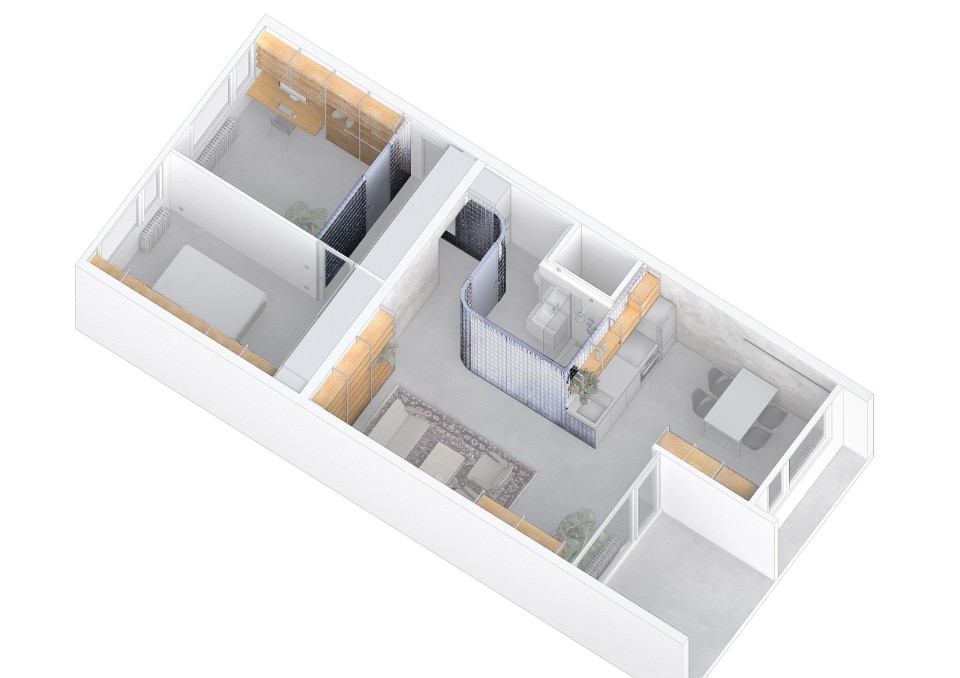
PAPUNDEKL ARCHITECTS, Apartment with glass-block walls
Axonometry.
Photo Alex Shoots Buildings

PAPUNDEKL ARCHITECTS, Apartment with glass-block walls
Axonometry.
Photo Alex Shoots Buildings
An apartment in Dablice, a municipal district of Prague, Czech Republic, is located within a 1970s housing complex distinguished by standardized, prefabricated houses. The apartment, poorly lit prior to construction, was renovated by Papundekl architects, who shaped a versatile subdivision of space and inserted glass-cement partitions. Read more
La scala-scultura che trasforma un attico a Lisbona

 View gallery
View gallery
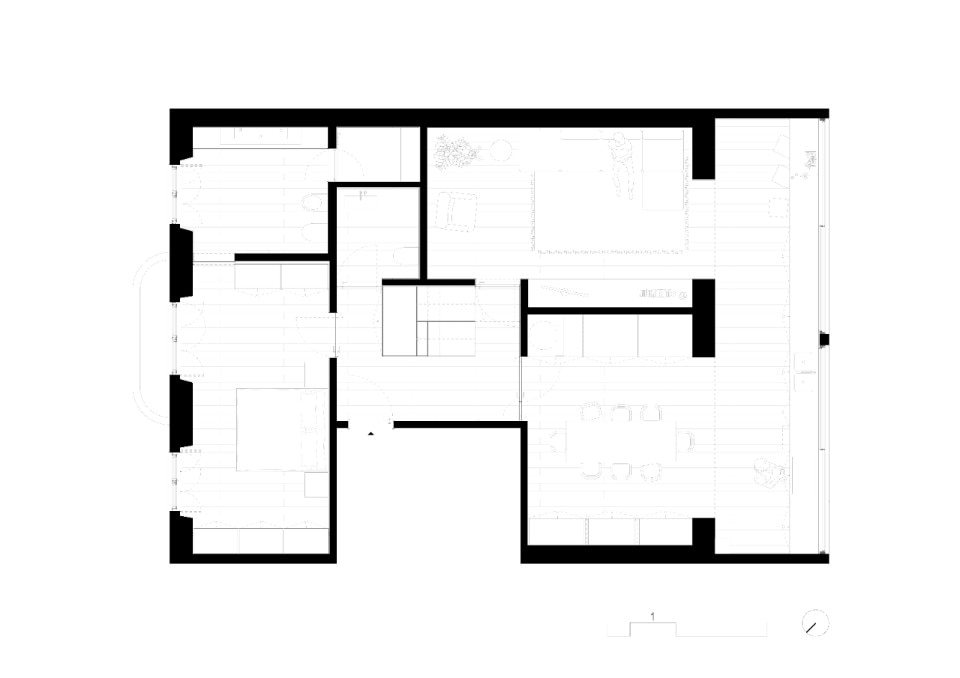
Atelier José Andrade Rocha, João Soares – penthouse renovation
First floor plan.
Photo Hugo Santos Silva

Atelier José Andrade Rocha, João Soares – penthouse renovation
Second floor plan.
Photo Hugo Santos Silva

Atelier José Andrade Rocha, João Soares – penthouse renovation
First floor plan.
Photo Hugo Santos Silva

Atelier José Andrade Rocha, João Soares – penthouse renovation
Second floor plan.
Photo Hugo Santos Silva
A flat in the centre of Lisbon, in the Campo Grande district, has been renovated by Atelier José Andrade Rocha, which has transformed it by proposing a new distribution and organisation of spaces. The apartment is located on the top floor of a 1960s building and overlooks the park through large windows. Read more
And the hidden room in a small house in Padua

 View gallery
View gallery

Collaboratorio, Renovation of an apartment in Padua, Italy
Photo Simone Bossi Photographer

Collaboratorio, Renovation of an apartment in Padua, Italy
Photo Simone Bossi Photographer

Collaboratorio, Renovation of an apartment in Padua, Italy
Photo Simone Bossi Photographer

Collaboratorio, Renovation of an apartment in Padua, Italy
Photo Simone Bossi Photographer

Collaboratorio, Renovation of an apartment in Padua, Italy
Photo Simone Bossi Photographer
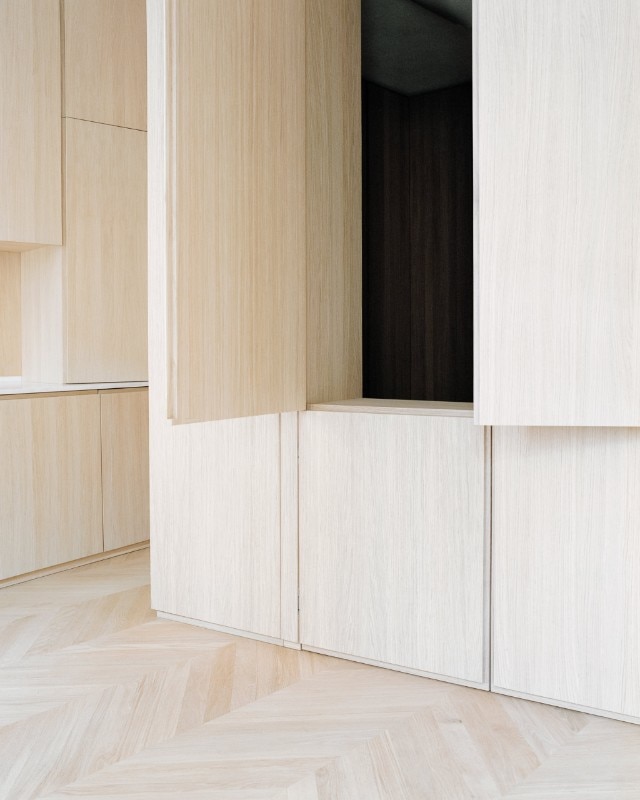
Collaboratorio, Renovation of an apartment in Padua, Italy
Photo Simone Bossi Photographer

Collaboratorio, Renovation of an apartment in Padua, Italy
Photo Simone Bossi Photographer

Collaboratorio, Renovation of an apartment in Padua, Italy
Photo Simone Bossi Photographer

Collaboratorio, Renovation of an apartment in Padua, Italy
Photo Simone Bossi Photographer

Collaboratorio, Renovation of an apartment in Padua, Italy
Photo Simone Bossi Photographer

Collaboratorio, Renovation of an apartment in Padua, Italy
Photo Simone Bossi Photographer

Collaboratorio, Renovation of an apartment in Padua, Italy
Photo Simone Bossi Photographer

Collaboratorio, Renovation of an apartment in Padua, Italy
Photo Simone Bossi Photographer

Collaboratorio, Renovation of an apartment in Padua, Italy
Photo Simone Bossi Photographer

Collaboratorio, Renovation of an apartment in Padua, Italy
Photo Simone Bossi Photographer
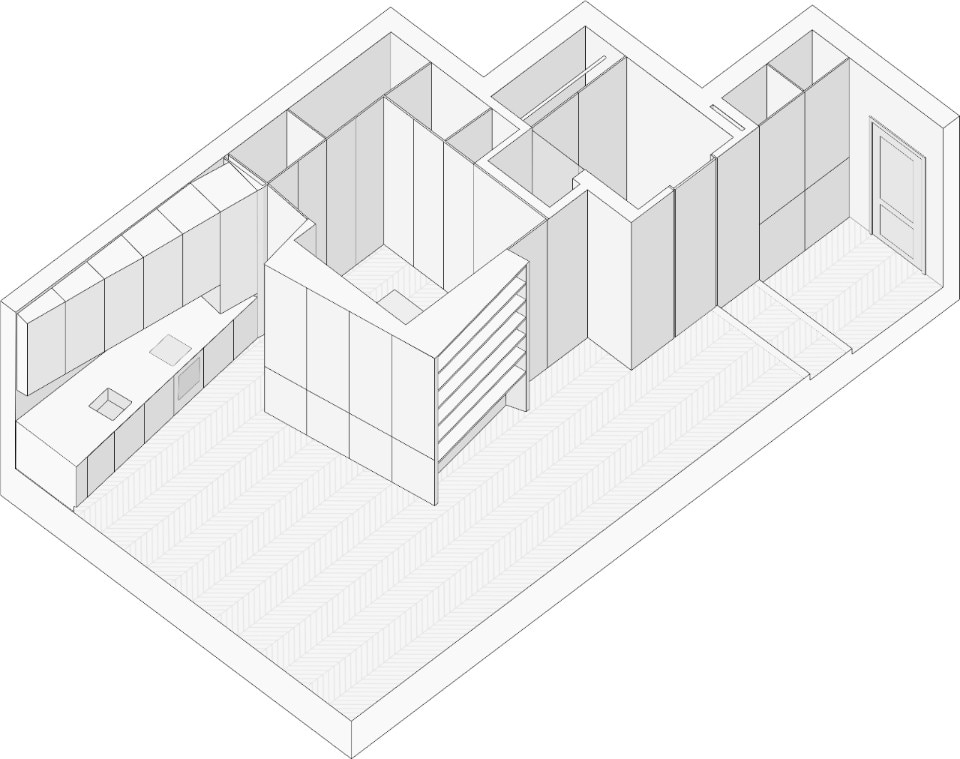
Collaboratorio, Renovation of an apartment in Padua, Italy
Isometric view.
Collaboratorio

Collaboratorio, Renovation of an apartment in Padua, Italy
Isometric view.
Collaboratorio

Collaboratorio, Renovation of an apartment in Padua, Italy
Photo Simone Bossi Photographer

Collaboratorio, Renovation of an apartment in Padua, Italy
Photo Simone Bossi Photographer

Collaboratorio, Renovation of an apartment in Padua, Italy
Photo Simone Bossi Photographer

Collaboratorio, Renovation of an apartment in Padua, Italy
Photo Simone Bossi Photographer

Collaboratorio, Renovation of an apartment in Padua, Italy
Photo Simone Bossi Photographer

Collaboratorio, Renovation of an apartment in Padua, Italy
Photo Simone Bossi Photographer

Collaboratorio, Renovation of an apartment in Padua, Italy
Photo Simone Bossi Photographer

Collaboratorio, Renovation of an apartment in Padua, Italy
Photo Simone Bossi Photographer

Collaboratorio, Renovation of an apartment in Padua, Italy
Photo Simone Bossi Photographer

Collaboratorio, Renovation of an apartment in Padua, Italy
Photo Simone Bossi Photographer

Collaboratorio, Renovation of an apartment in Padua, Italy
Photo Simone Bossi Photographer

Collaboratorio, Renovation of an apartment in Padua, Italy
Photo Simone Bossi Photographer

Collaboratorio, Renovation of an apartment in Padua, Italy
Photo Simone Bossi Photographer

Collaboratorio, Renovation of an apartment in Padua, Italy
Photo Simone Bossi Photographer

Collaboratorio, Renovation of an apartment in Padua, Italy
Photo Simone Bossi Photographer

Collaboratorio, Renovation of an apartment in Padua, Italy
Isometric view.
Collaboratorio

Collaboratorio, Renovation of an apartment in Padua, Italy
Isometric view.
Collaboratorio
Inside a flat located in the historic heart of Padua, Collaboratorio has shaped a functional space for a young couple, designed to adapt and transform. The house, which had become an office during the 1980s, is now a light-filled environment proposing a different division of space. Read more
A hybrid wooden capsule in the heart of a renovated interior in Sicily

 View gallery
View gallery
For a flat overlooking the Strait of Messina from the inside of a 1970s building, Punto Zero has conceived a space that manages to be "open, continuous and fragmented" at the same time.
The renovation conceived by the designers for this 175 sqm surface is a redefinition of its very lifestyle, centred on the characteristics of fluidity and transformability. Read more
And a blue volume starring a renovated farm in Belgium

 View gallery
View gallery
A former farmhouse in the countryside of Opwijk, Belgium, has been transformed into two single-family dwellings – one of which serves as a care home. The renovation project, signed by Object Architecten, aims to maintain the typical Flemish rural characteristics by preserving the shape of the roofs and external walls of the existing structure. Inside the old barn, a new volume has been inserted, transparent and open, which is proposed as the fulcrum of the family’s home. Read more
Sculptural insight in a Milan apartment
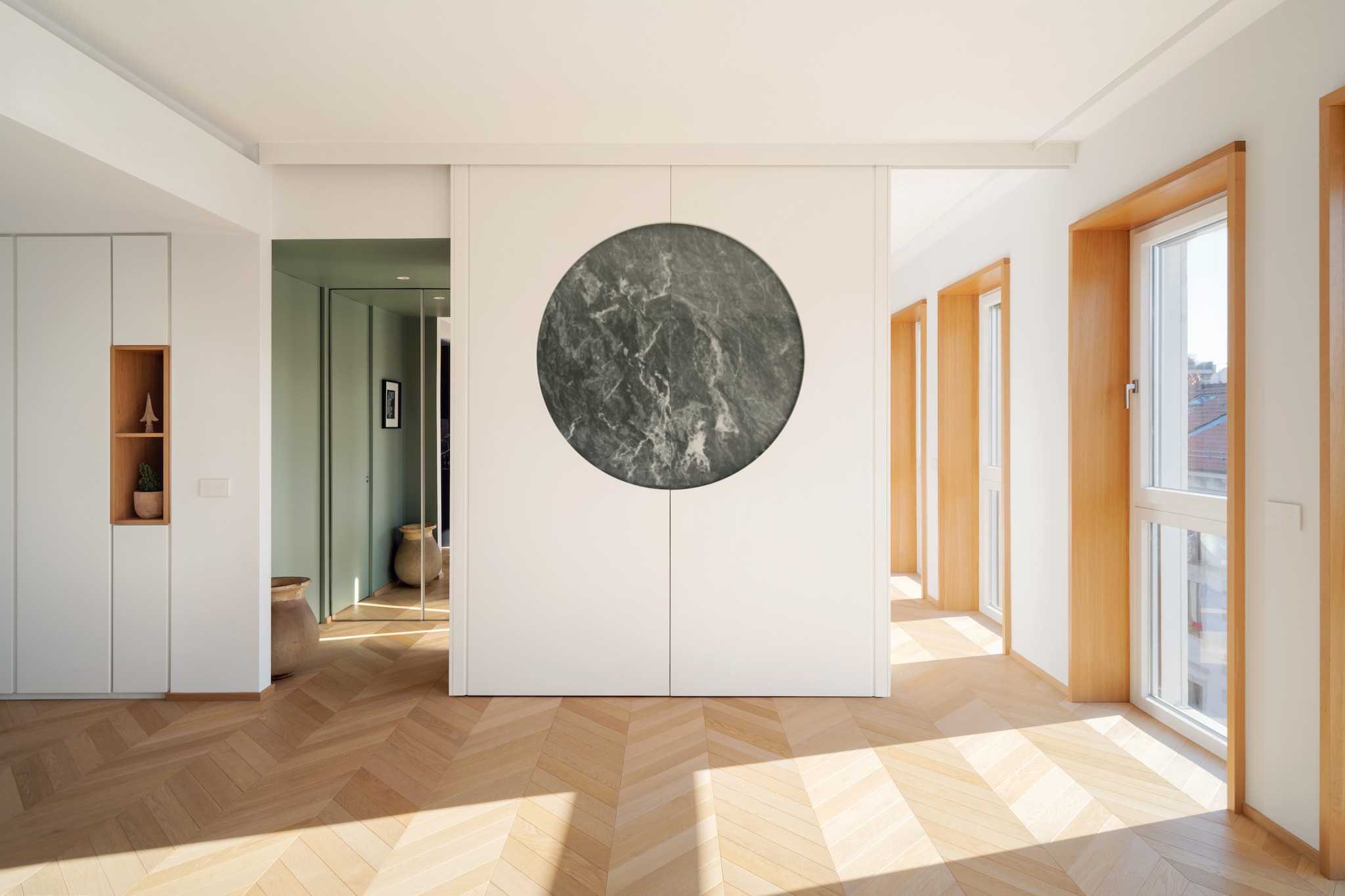
 View gallery
View gallery
Articulated around a spatial device combining pure geometries, tension between spaces and rhythmic sequences are the characteristic features of a flat in the centre of Milan, recently renovated by studio Llabb Architettura. The 60 square metre space is meant to be explored: constantly transforming, it features sliding panels that hide or show rooms according to the needs of the owner, a professional dividing his time between the cities of Milan and Genoa.
The renovation project has valorized the existing flat by knocking down the central walls and shaping a larger space that houses living area, kitchen and dining room. Read more
New visual cuts enhance a 19th-century home in Antwerp

 View gallery
View gallery
A 19th century property in the city of Antwerp, Belgium, has been renovated by Poot architectuur studio through an intervention aimed at preserving the original features. The house, clad on the outside with the typical red bricks of the period, covers an area of 275 square metres and is distributed over four levels, entirely renovated by the Belgian studio.
A volume, clad with metal panels on the facade, has been added to the architecture: this space houses the bright kitchen distinguished by a considerable height. Read more
A bakery in Spain that becomes an apartment with a hidden patio

 View gallery
View gallery
From a former bakery in the 1980s to a single-family home: the renovation of an industrial space in Palma, Spain, offers a solution to unaffordable housing. Located on the ground floor and facing the street of a densely populated neighbourhood, the flat is based on a balance of natural light, usability of space and relationship with the outdoors. Read more
A mini loft in France built for colorful objects, including video games and comic books
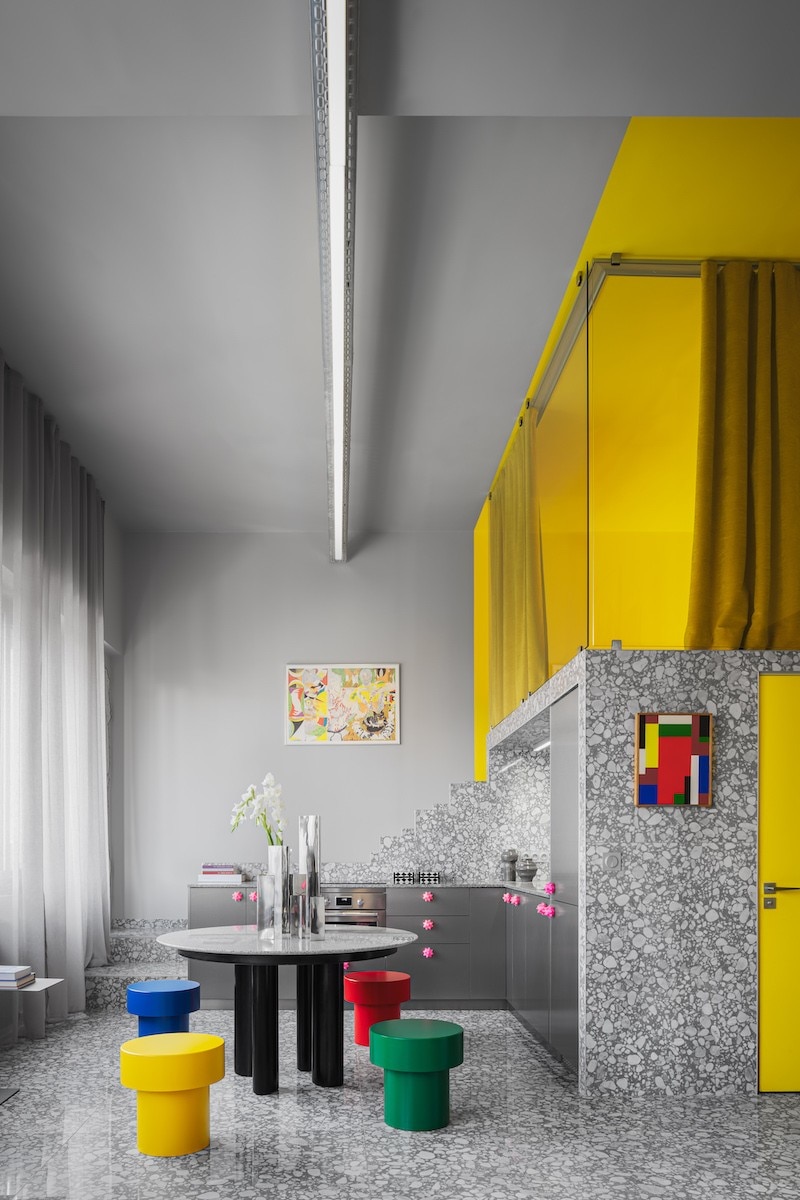
 View gallery
View gallery
Located in an old industrial building in the town of Bagnolet, near Paris, a mini loft has been renovated into a playful environment by experimenting with bright colours, various geometries, graphic patterns and materials. Zyva Studio founder, Anthony Authié, used references from his youth to propose an “aesthetic narrative” and “a new form of hybrid architecture”. Read more
Opening image: Poot Architectuur, Mozart, Antwerp, Belgium, 2021. Photo © Stijn Bollaret





